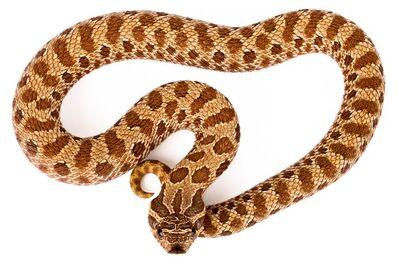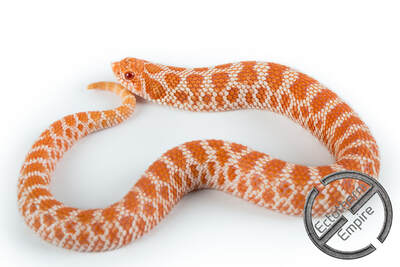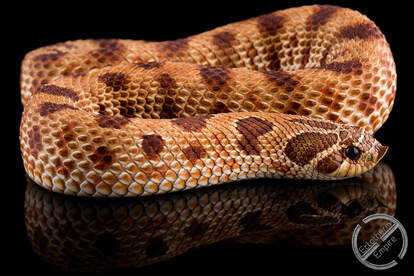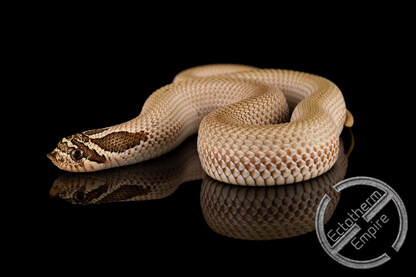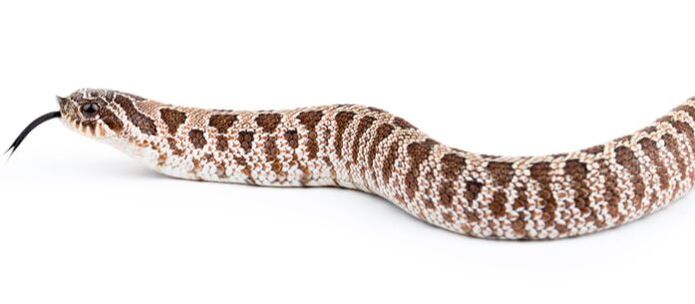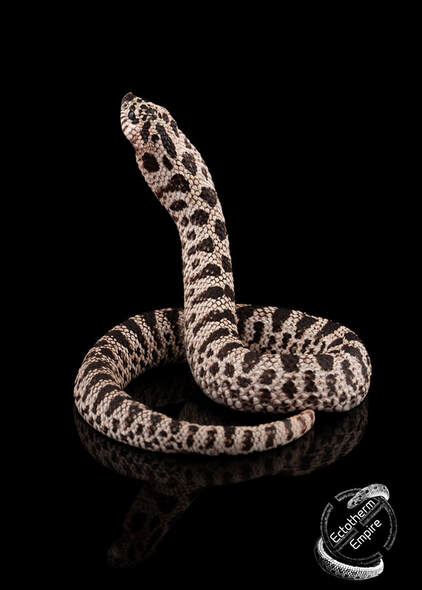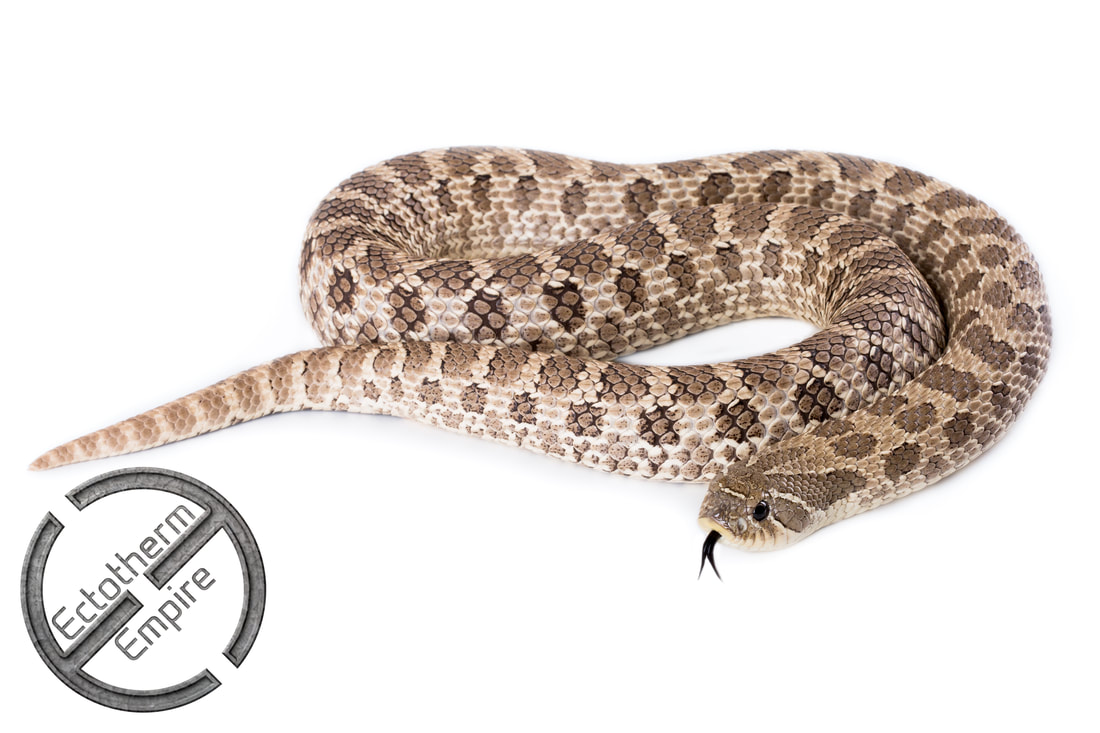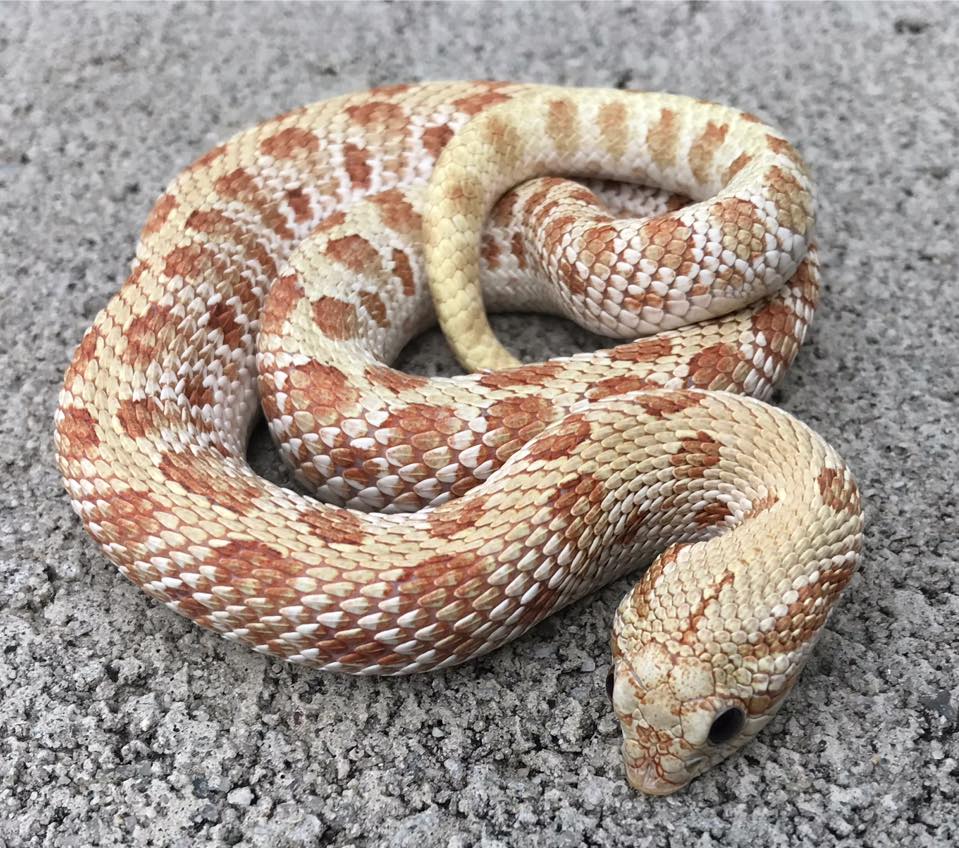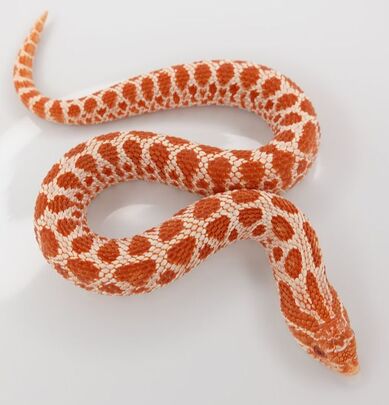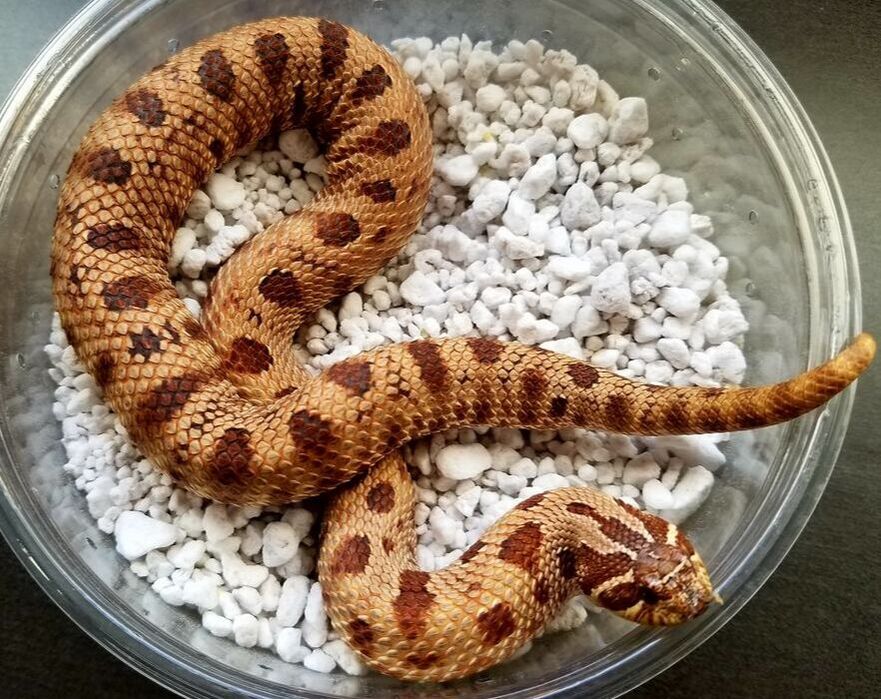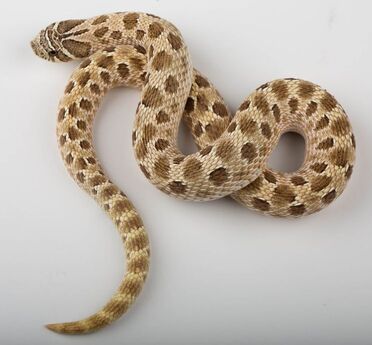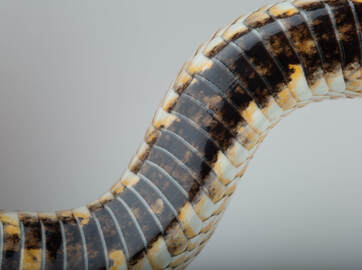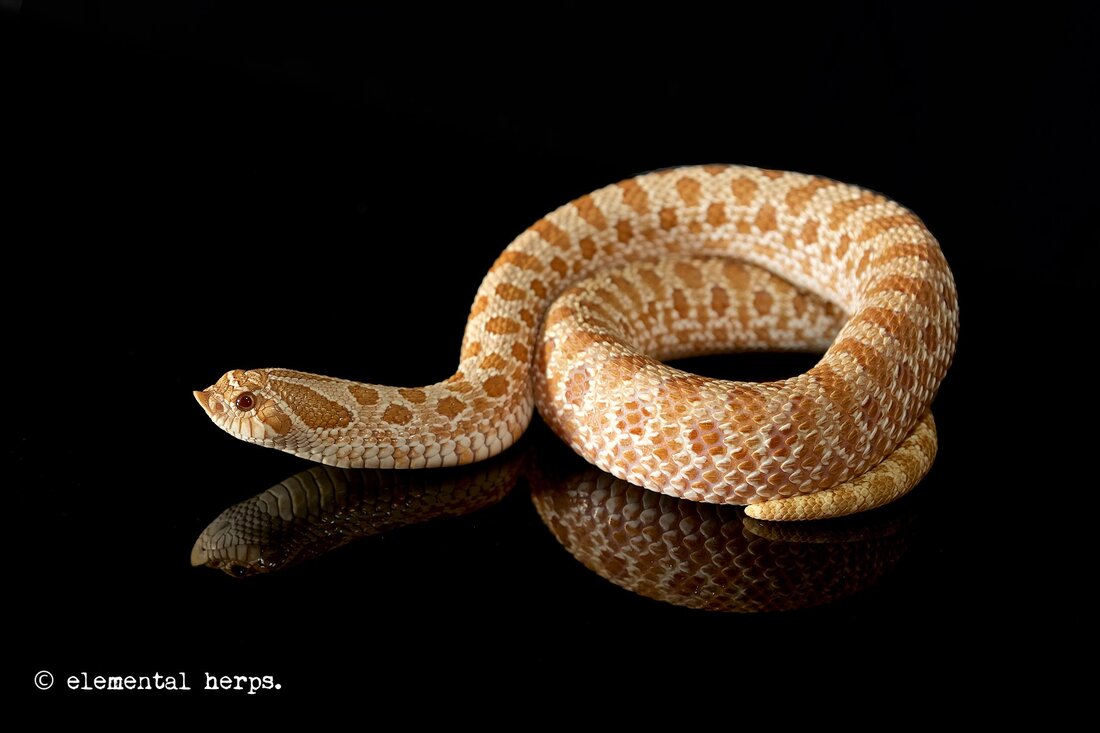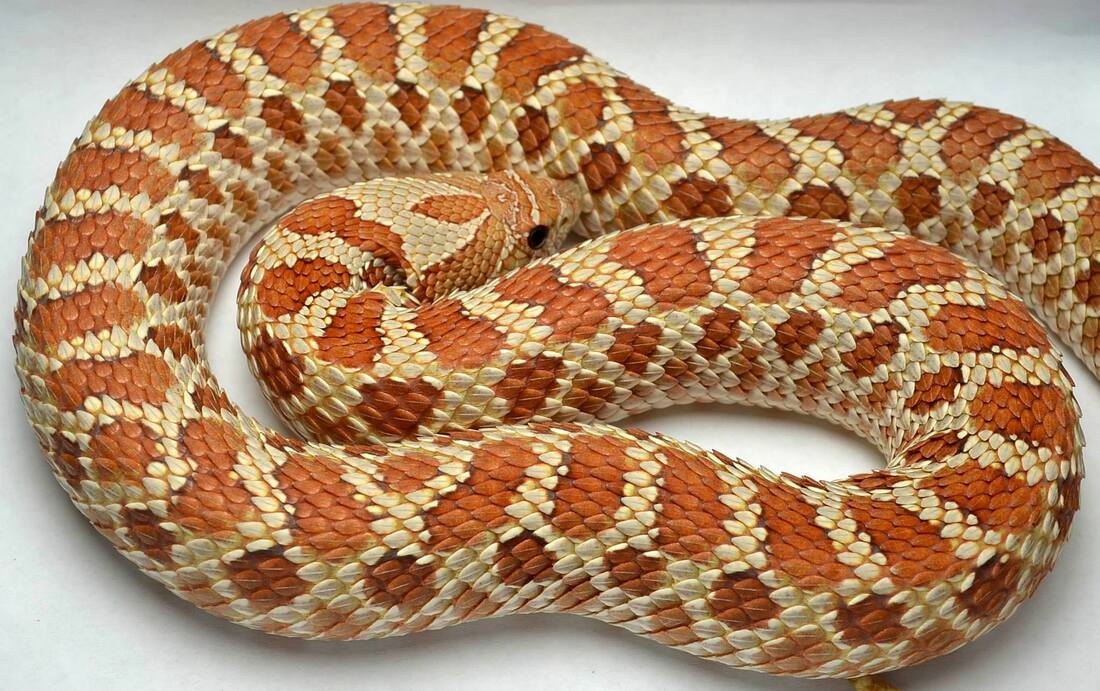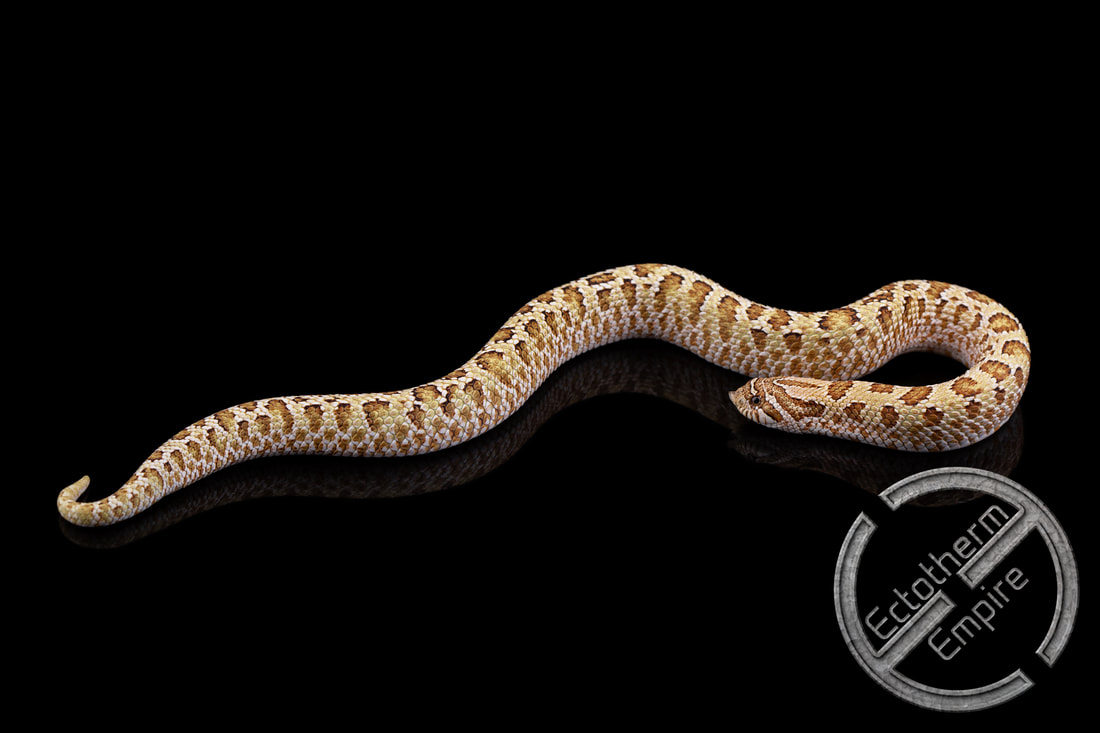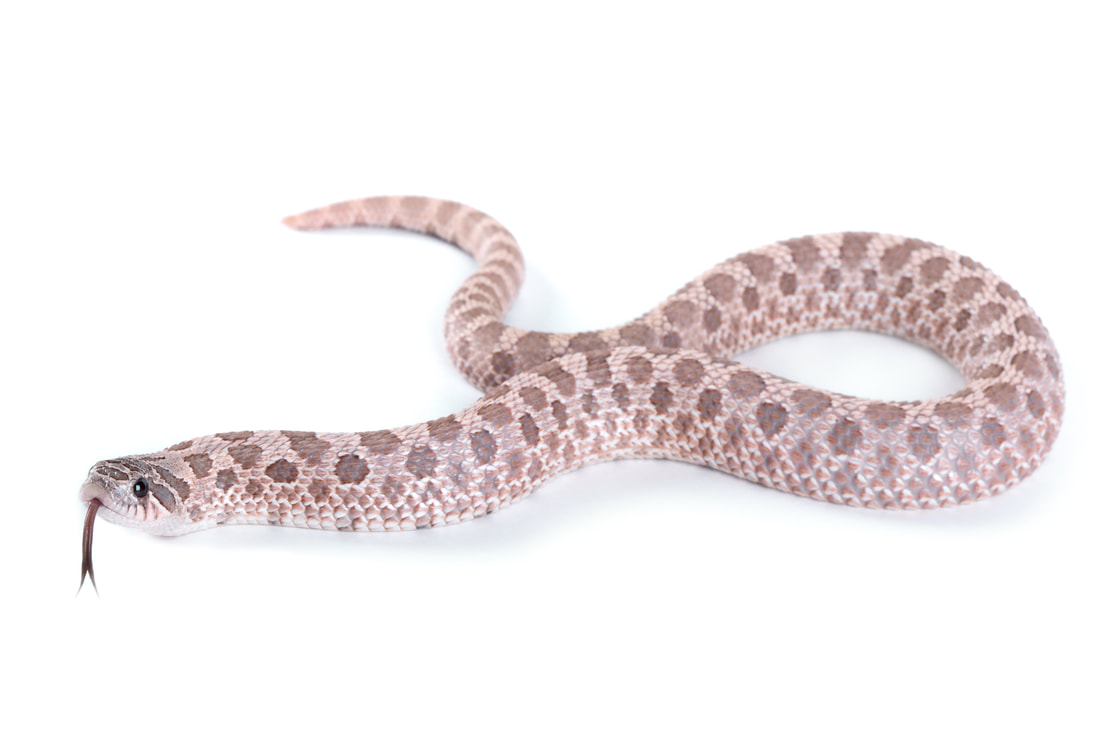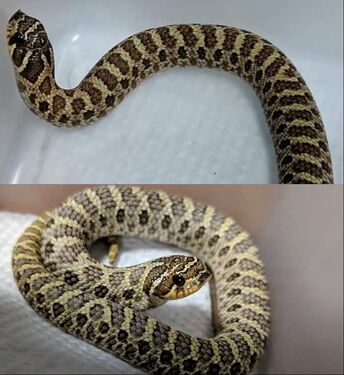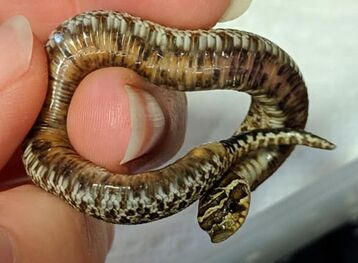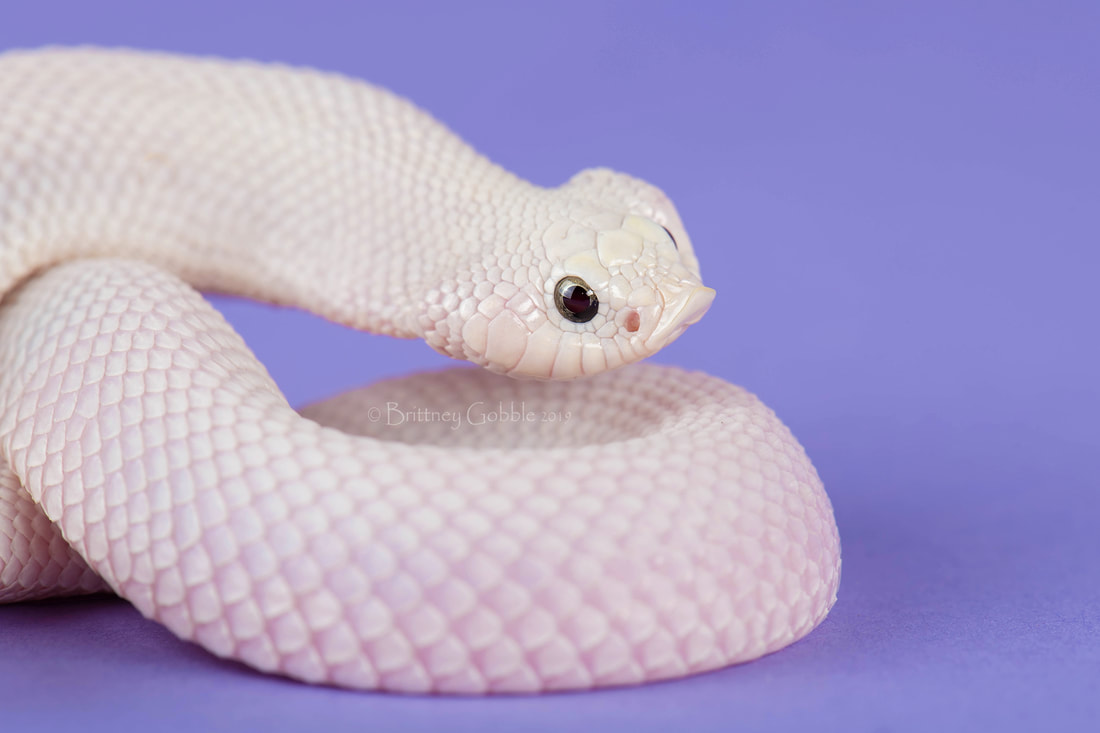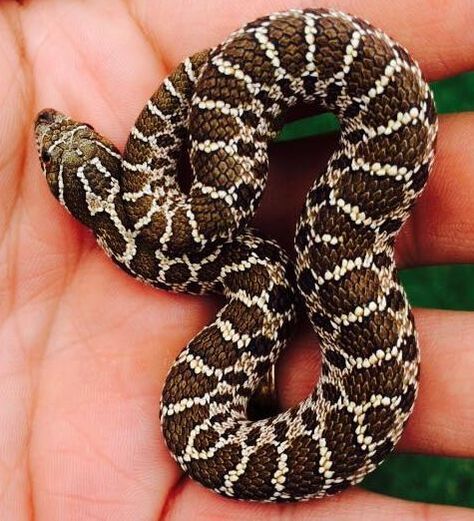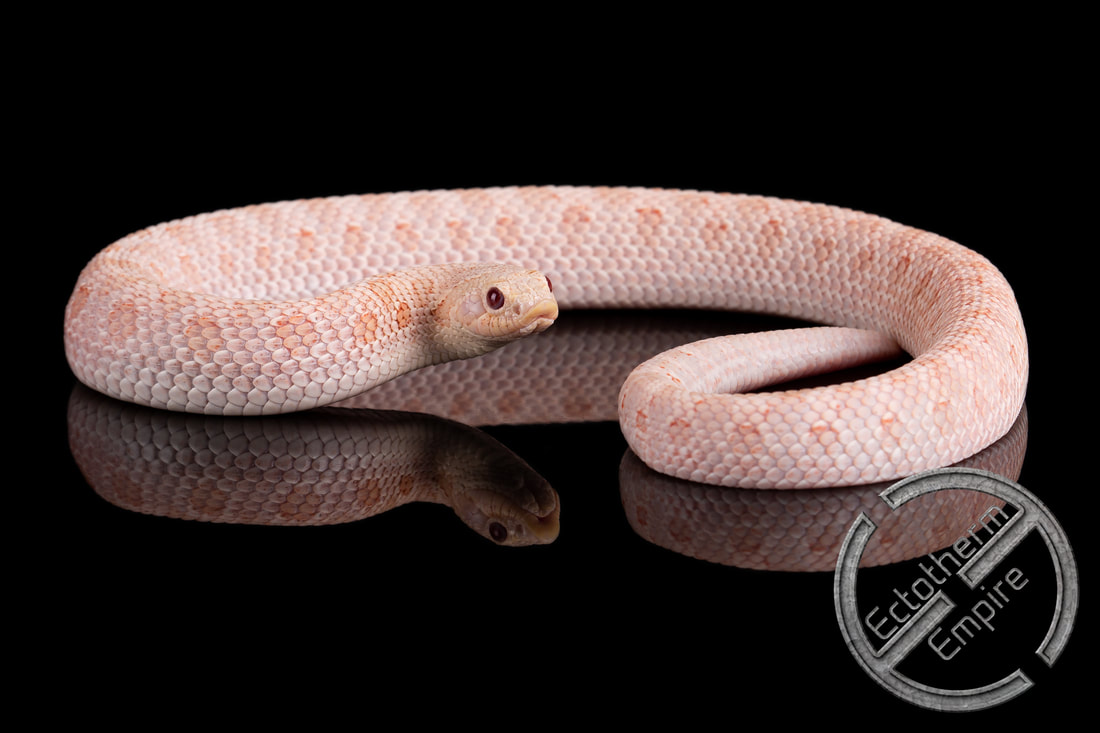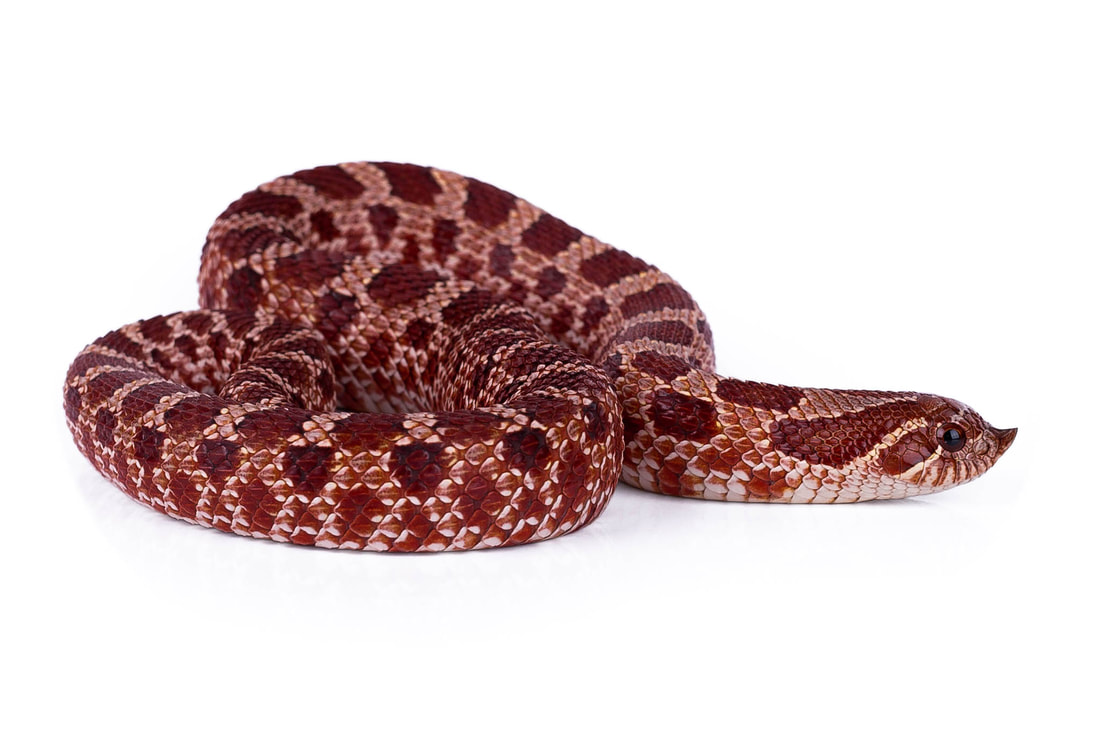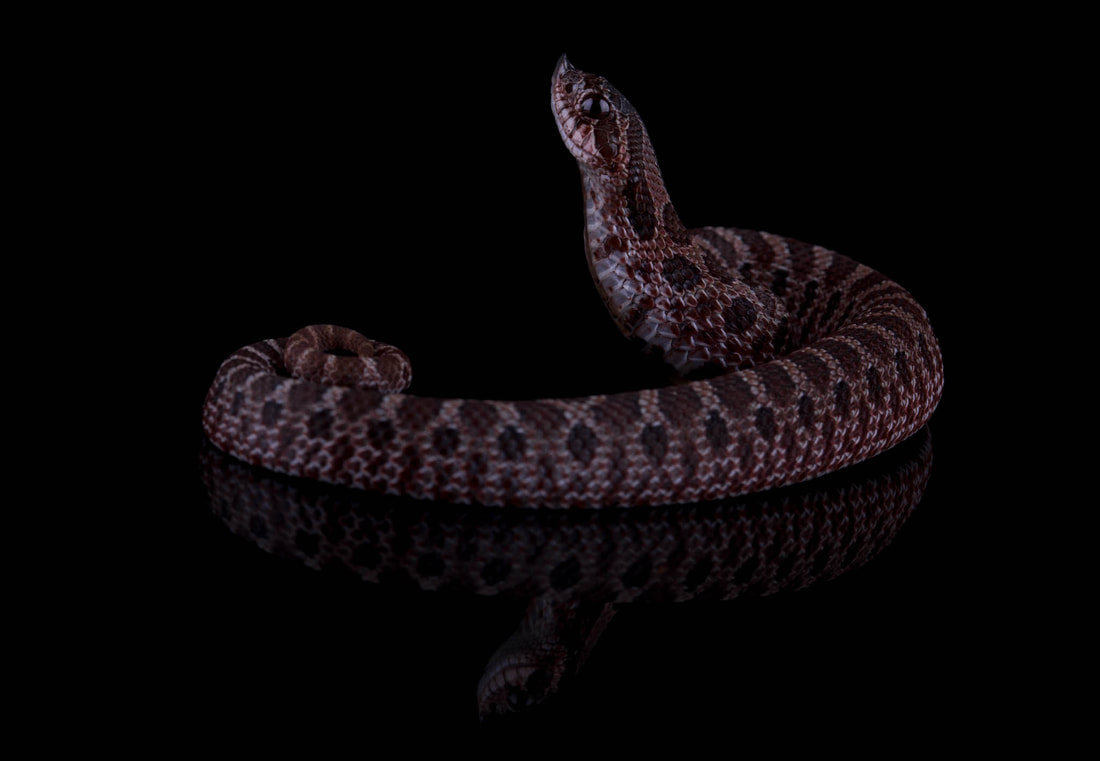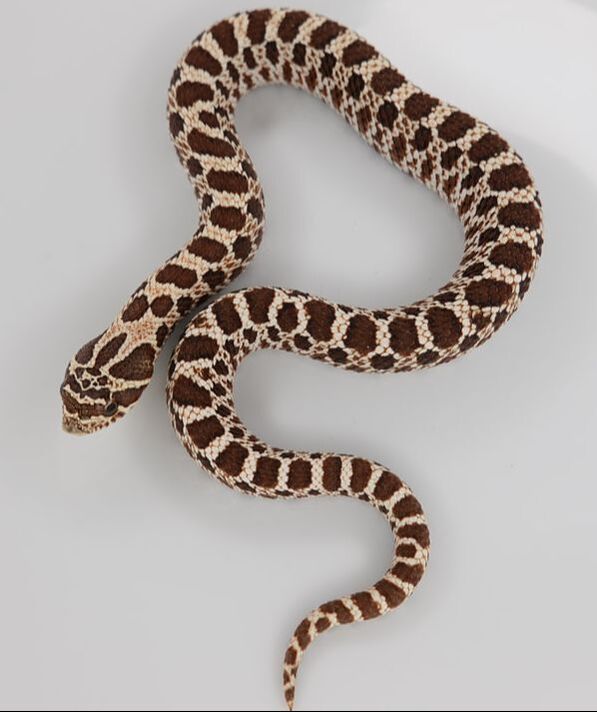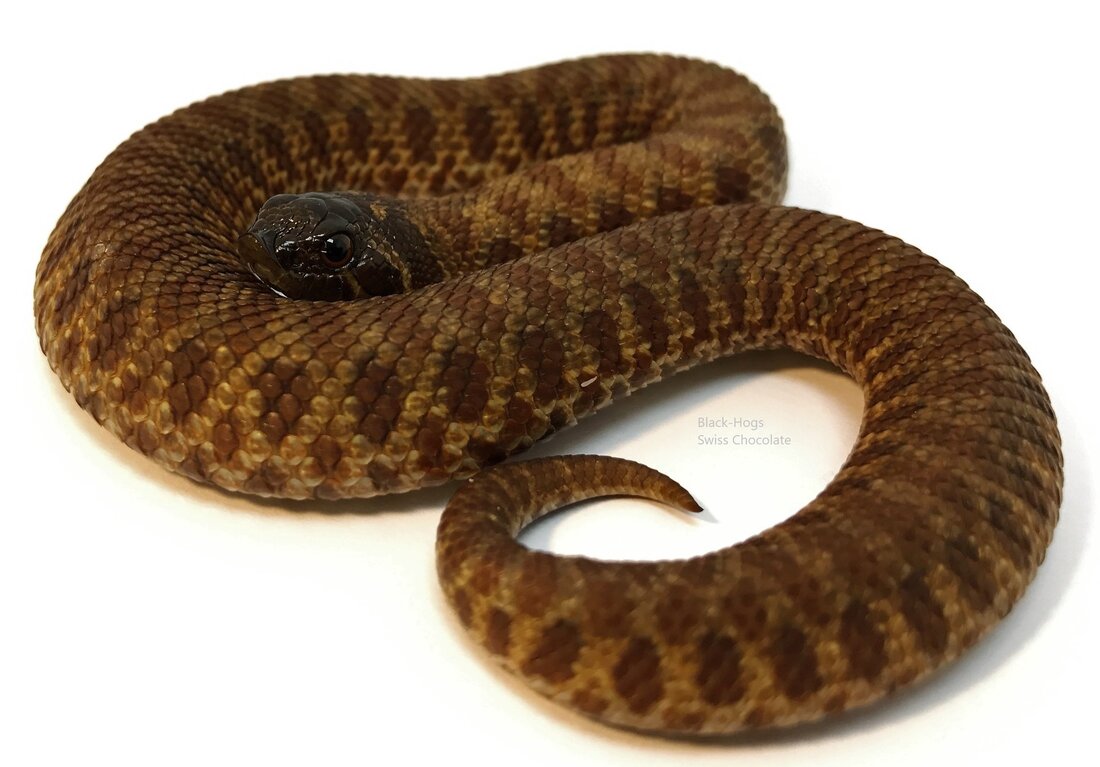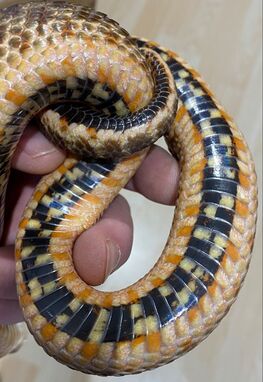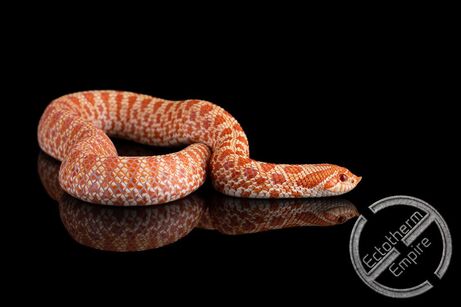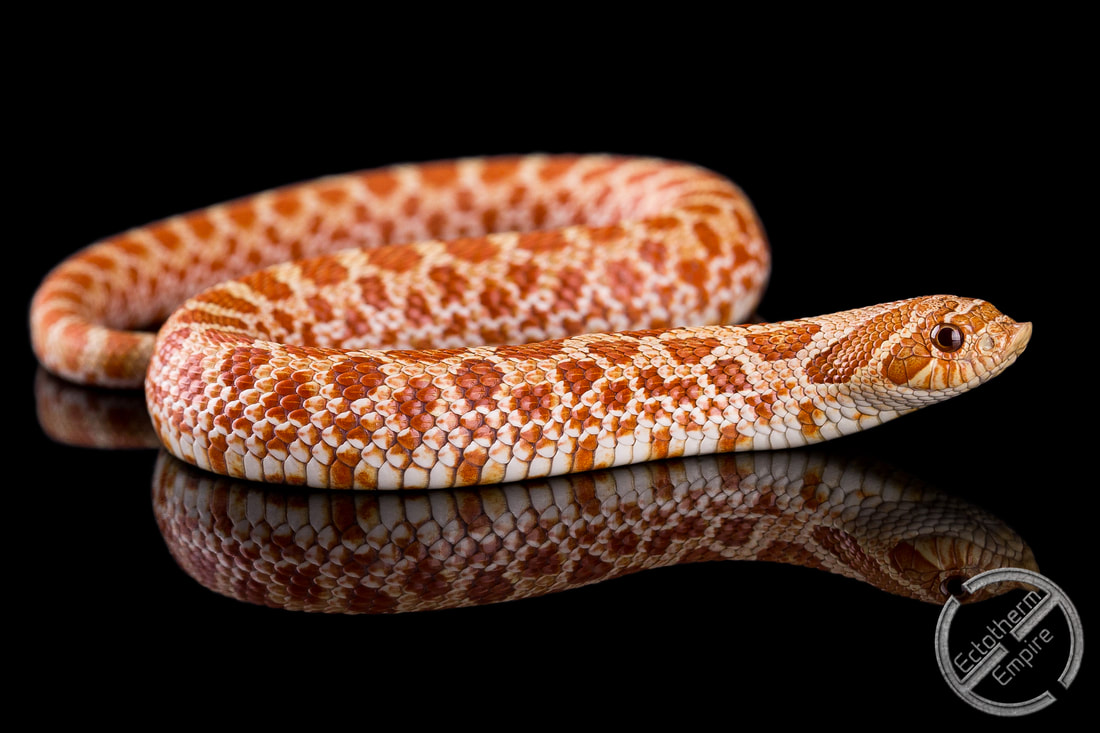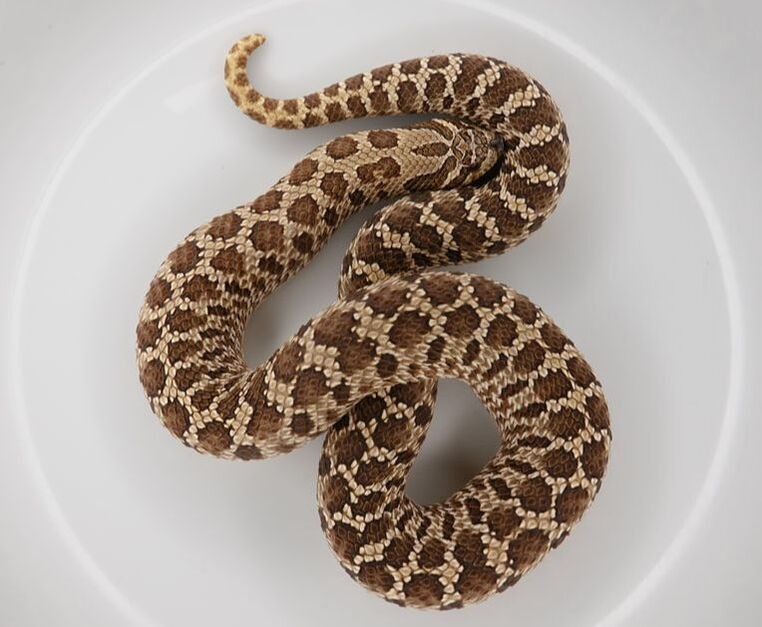A Quick Refresher First...
Before we delve into Western Hognose Snake morphs we feel it is important to review some of the more important genetic terms that apply to the breeding of these animals. The information in this short glossary section can primarily be found on the US National Library of Medicine website at nlm.nih.gov . To reach a broader audience we have decided to continue to use the provided examples of human genetics to demonstrate the terminology. Analogous Western Hognose genetics may be provided where possible.
We welcome sharing of this information on these pages, but we do ask that you give us credit in such cases, as we have for the photos we use that are not our own. Compiling this knowledge is time consuming and we do not get compensated for said time. Please credit us in the case you use our intellectual property.
- Genes- Parts of DNA that carry hereditary information passed from parents to offspring. Consider genes as the "blueprints" for each individual's specific traits. Genes are carried on chromosomes.
- Allele- Different forms of a gene which produce variations in a genetically inherited trait.
- Example: Different alleles produce different hair colors--- blonde, red, brown, black, etc.
- Locus- The fixed position on the chromosome that contains a particular gene.
- Genotype- The genetic make-up of an organism. This may refer to all genes or a specific gene.
- Example: Red hair may present in children with parents that do not have red hair. While the parents do no visually express this trait, they still carry the appropriate alleles.
- Phenotype- Outwardly expressed traits or characteristics that are the results of the interaction of the genotype of the organism and it's environment.
- Example: Our genes control the amount of melanin we produce, but exposure to UV light encourages melanogenesis, also darkening the skin.
- Homozygous- Two of the same form of a gene-- one from the mother, and the other from the father are the same.
- Heterozygous- Two different forms of a gene-- one from the mother, and the other from the father are different.
- Dominant- The dominant version of a gene shows it's specific trait even if only one parent passed the gene to the offspring.
- Example: When a child inherits dominant brown hair allele from the father, the child will have brown hair, no matter if the mother also passed on the brown hair allele or not.
- Example: The RBE Pastel gene in Western Hognose snakes is always expressed when the snake carries that gene. Markers of this gene will be described below in the morph section.
- Recessive- A recessive gene shows it's specific trait when both parents pass the gene to the offspring.
- Example: When a child inherits recessive blue-eye allele from both the mother and the father, the child will have blue eyes.
- Example: When a hatchling Western Hognose inherits the albino gene from BOTH the mother and the father, the hatchling will be albino.
- Mendelian Inheritance- A simple genetic rule where a gene only comes in dominant and recessive forms.
- *** It is important to note that there are several cases where genetic inheritance does not follow this rule and just because something may not follow, it does not mean that it is not genetic. We'll touch back on this with the term polygenic. ***
- Co-Dominant- This breaks one of the Mendelian Inheritance principles. If the alleles received from the mother and the father are different, normally the dominant allele will be expressed, while the recessive is masked. With Co-Dominant genes, neither allele is recessive and so the phenotypes of both are expressed.
- Example: Where the ABO blood group is concerned in humans, if a child inherits allele "A" from the mother, and allele "B" from the father, the child will have blood-type "AB".
- *** It is important to note that there are no known co-dominant genes in Western Hognose snakes. Genes that are typically specified to be co-dominant are in fact Incomplete Dominant. This is often due to the ease and the succinct, albeit incorrect, nature of the "Co-Dom" shorthand (in Hognose related situations). ***
- Incomplete Dominant- This is when a dominant allele does not mask the effects of a recessive allele. This results in a physical appearance that shows a blending of both alleles.
- Example: A child born to a mother with curly hair and a father with straight hair will usually have wavy, or partially curly hair.
- Example: With Western Hognose snakes you can see this in the Conda (Anaconda) morph. If you breed a patternless Superconda female to a normal patterned (also known as wildtype) male, your resulting hatchlings would be condas. This incomplete dominance is represented in the reduced pattern conda, where the hatchlings have more pattern present than the Superconda form, but less than the normal (wildtype) form. There are several more markers for the conda form and this example reduces it's description down to the bare essentials simply to provide a basic understanding of incomplete dominant genes in Western Hognoses.
- Multiallelic- Relating to or affected by multiple alleles, or genes.
- Polygenic- Where a phenotype is influenced by more than one gene. Expression of a polygenic trait would typically form a bell curve if charted on a graph.
- Example: Skin color varies in a continuous gradient with the majority of people falling in-between the extremes of extremely light and extremely dark. In this case a person is not quantifiable as simply light or dark, but rather somewhere in-between.
- Example: Color expression in Western Hognose snakes is a multigenerational endeavor where the breeder selects for a desired result, often aiming for the higher extreme in color expression. Despite the goal, results are often spread out over the spectrum, with some animals considered low expression, or "worse" than the parents, some equivalent, and the remaining surpassing the expression of the parents.
We welcome sharing of this information on these pages, but we do ask that you give us credit in such cases, as we have for the photos we use that are not our own. Compiling this knowledge is time consuming and we do not get compensated for said time. Please credit us in the case you use our intellectual property.
Wildtype
Albino
Anaconda (Conda and Superconda)
|
An incomplete dominant trait.
Condas commonly present with a faded pattern, but many different representations of this morph exist. The most definitive marker for a conda is a solid black belly, lined with white walls, although this marker is not ALWAYS present. Supercondas are the complete form of the Anaconda trait. Presents with a patternless body. |
Arctic and Superarctic (aka JMG Axanthic)
|
An incomplete dominant trait.
Most common visual representations of Arctics present with higher contrast animals where the pattern has dark black outline with white edging and fading towards the center of the pattern. Flecking is usually present over the body of the animal. Some animals will present with more of a gray de-saturated color. Extreme reds and higher color parents tend to make identification of this morph more complicated. Comparison to normal siblings is important when identifying Arctic animals. Superarctics are the complete form of the Arctic trait and present as a high contrast animal that is born extremely dark, almost black. With each shed the animal develops progressively more contrast, eventually resulting in a snake that looks almost black and white. |
Axanthic
Caramel
Extreme Red
Granite
Green Hypo
Hypo (Dutch, Evan's)
|
A recessive trait expressed with a lack of melanin, while still maintaining other, darker pigments. Areas that would normally be black, now present with a purplish or gray hue. Best seen with the belly pattern. Both Dutch and Evan's Hypo are not hypomelanistic. They are a form of albino, that still retains dark pigmentation.
Photo provided by Meko Walker at Elemental Herps. |
Hypo (True)
Jag (aka Jaguar)
Lavender
Lemon Ghost
|
A polygenic trait where the animal gradually develops stronger yellow pigmentation with age. With this development comes a reduction in contrast between the background color and the pattern (saddle markings) as they begin to fade. High quality Lemon Ghosts will have reduced black pattern to the belly, and a hazy "ghosty" appearance.
|
Leucistic
Mocha
|
A dominant or incomplete dominant trait. No consistent breeding records exist to substantiate either claim. Trait presents with large pattern blotches, often square or with tiger banding. The background is often lighter and "creamy" in appearance, with a deep melanin concentration throughout the saddles. The contrast between the background and pattern remains during growth.
Photo provided by Louie Chavez at Cowtown Reptiles. |
Pink Pastel
Pistachio
|
A recessive trait that expresses similarly to Green Hypo. Snakes with this trait often exhibit a purplish-smoky belly instead of the usual black. Animals present with a green and pink hue and a lack of black or melanin on the dorsal surface.
This trait appears to be complex to describe and so the description and photos are provided by Filip Longhitano. |
Purple Line
RBE Pastel
Sable
Shadow
Swiss Chocolate
|
A recessive trait. This hypermelanistic morph presents with a dark, often monochrome head. There may be occasional marbling in the face or headstamp. The pattern is dark, and consistent with the background. While some lightening or darkening occurs with each shed, the changes are relatively minimal. Coloration varies from deep shades of brown, to gray, green or a smokey black.
Photos provided by Jules Toth at Black Hogs. |
Tiger/Banded
Toffee/Toffeebelly
|
A recessive trait, expressed with a lack of melanin. These animals often have black paradoxing in small flecks that present most commonly on the underside, but can develop anywhere on the body. This paradoxing develops as the animal matures. What would normally be a black patterned belly presents as a brown to purplish hue.
|

